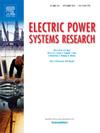A double-ended fault location method for hybrid transmission line based on rotary phasors
IF 3.3
3区 工程技术
Q2 ENGINEERING, ELECTRICAL & ELECTRONIC
引用次数: 0
Abstract
Hybrid transmission lines, consisting of overhead lines and underground cables, are widely employed in urban areas. Transient faults in such hybrid lines, coupled with the non-homogeneous nature of line parameters and short fault durations, present challenges for fault location. In this paper, a double-ended fault location method based on rotary phasors is proposed for hybrid lines and transient faults. The method offers the following advantages: 1) it is suitable for hybrid lines with multiple segments having varying impedance parameters, and does not require prior knowledge of the faulted segment; 2) it directly computes fault location from sampled values without the need for phasor extraction, allowing the use of time windows shorter than one cycle, making it well-suited for transient faults. The method is divided into three stages: defining rotary phasors with the sampled values and calculating instantaneous electrical quantities at each end of each segment, decoupling the line using the instantaneous symmetrical component method, and locating the fault through an optimization problem. Fault location for each segment is determined through global search, with the valid fault location being identified as the final result. A series of simulations were performed in MATLAB, validating the method's effectiveness and accuracy.
基于旋转相量的混合输电线路双端故障定位方法
混合输电线路由架空线路和地下电缆组成,广泛应用于城市地区。这种混合线路的暂态故障,加上线路参数的非均匀性和故障持续时间短,给故障定位带来了挑战。针对混合线路和暂态故障,提出了一种基于旋转相量的双端故障定位方法。该方法具有以下优点:1)适用于具有不同阻抗参数的多段混合线路,且不需要预先了解故障段;2)它直接从采样值计算故障位置,而不需要提取相量,允许使用时间窗短于一个周期,使其非常适合瞬态故障。该方法分为三个阶段:利用采样值定义旋转相量并计算每段两端的瞬时电量;利用瞬时对称分量法对线路进行解耦;通过优化问题进行故障定位。通过全局搜索确定每一段的故障位置,最终识别出有效的故障位置。在MATLAB中进行了一系列仿真,验证了该方法的有效性和准确性。
本文章由计算机程序翻译,如有差异,请以英文原文为准。
求助全文
约1分钟内获得全文
求助全文
来源期刊

Electric Power Systems Research
工程技术-工程:电子与电气
CiteScore
7.50
自引率
17.90%
发文量
963
审稿时长
3.8 months
期刊介绍:
Electric Power Systems Research is an international medium for the publication of original papers concerned with the generation, transmission, distribution and utilization of electrical energy. The journal aims at presenting important results of work in this field, whether in the form of applied research, development of new procedures or components, orginal application of existing knowledge or new designapproaches. The scope of Electric Power Systems Research is broad, encompassing all aspects of electric power systems. The following list of topics is not intended to be exhaustive, but rather to indicate topics that fall within the journal purview.
• Generation techniques ranging from advances in conventional electromechanical methods, through nuclear power generation, to renewable energy generation.
• Transmission, spanning the broad area from UHV (ac and dc) to network operation and protection, line routing and design.
• Substation work: equipment design, protection and control systems.
• Distribution techniques, equipment development, and smart grids.
• The utilization area from energy efficiency to distributed load levelling techniques.
• Systems studies including control techniques, planning, optimization methods, stability, security assessment and insulation coordination.
 求助内容:
求助内容: 应助结果提醒方式:
应助结果提醒方式:


